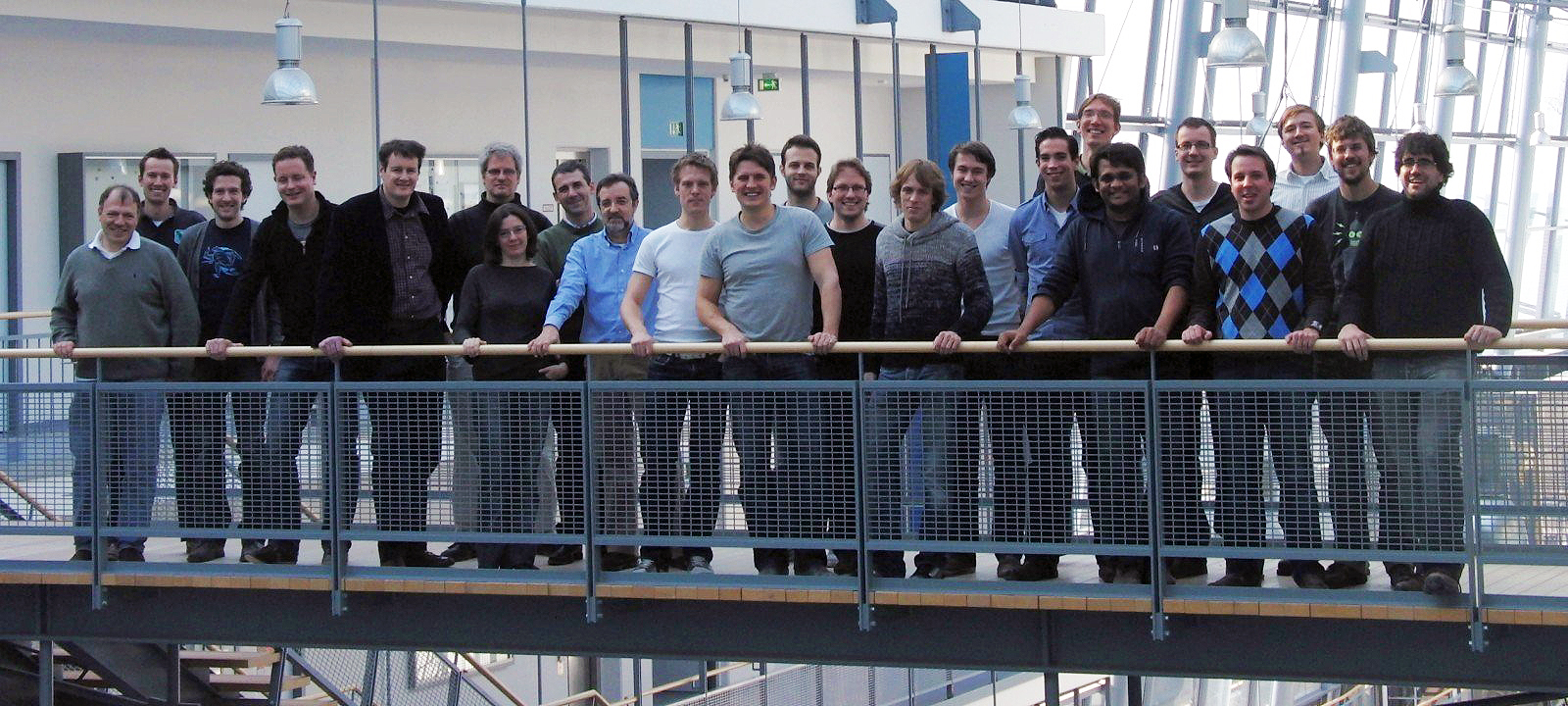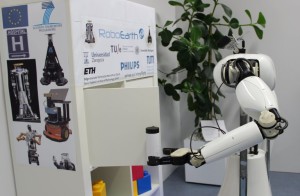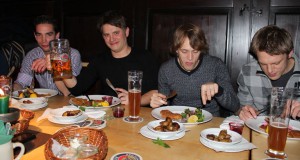Third Internal RoboEarth Workshop (Update)
Update (Sep 11, 2012):
Finally, we compiled a video of the demonstrator we created during the workshop including additional explanations of what is going on behind the visible actions of the robots:
The third internal RoboEarth workshop took place at the Technical University of Munich from February 8th to 12th, 2012, and was directly followed by RoboEarth's second Annual Review meeting on February 13th, 2012.

The RoboEarth demonstrator developed during the week-long workshop showed how two robots with different hardware and in different locations could use RoboEarth to share knowledge.
First, a PR2 robot in downtown Munich was ordered to serve a drink to a patient, who was resting in a bed in a mock-up hospital room. As a related semantic task description was available in the RoboEarth database, the PR2 could download this information and infer whether its capabilities comply with the task's requirements and what other knowledge it was missing to execute the task, e.g. object detection models and environment maps. It successfully checked the availability of the missing components on RoboEarth, downloaded them and as a result could start executing the task. As the drink was stored inside of a cabinet behind a closed door, the PR2 had to learn the articulation model for that door. After completing the learning process, the PR2 annotated the object model of the cabinet with the learned articulation model for the door and updated it on the RoboEarth database.
Then an Amigo robot in a similar (but not identical) hospital room environment in Garching close to Munich was given the same command of serving a drink. The robot could download needed knowledge from RoboEarth like the PR2 did. This time the articulation model was included, so that during the execution of the task Amigo didn't have to learn it by itself. Amigo was able to grasp the handle of the door and open it right away.
This demonstration showed what a shared knowledge base like RoboEarth including its reasoning services can add to the development of robots: Robots were able to navigate, recognize objects and perform complex manipulation tasks without being explicitly pre-programmed for these tasks beforehand.
To achieve this goal, all of the involved PhD students and several professors gathered in Munich to work on tomorrow's cloud robotics solutions. The week was characterized by a large amount of work and a limited amount of sleep - and a joint evening at a Bavarian restaurant.


